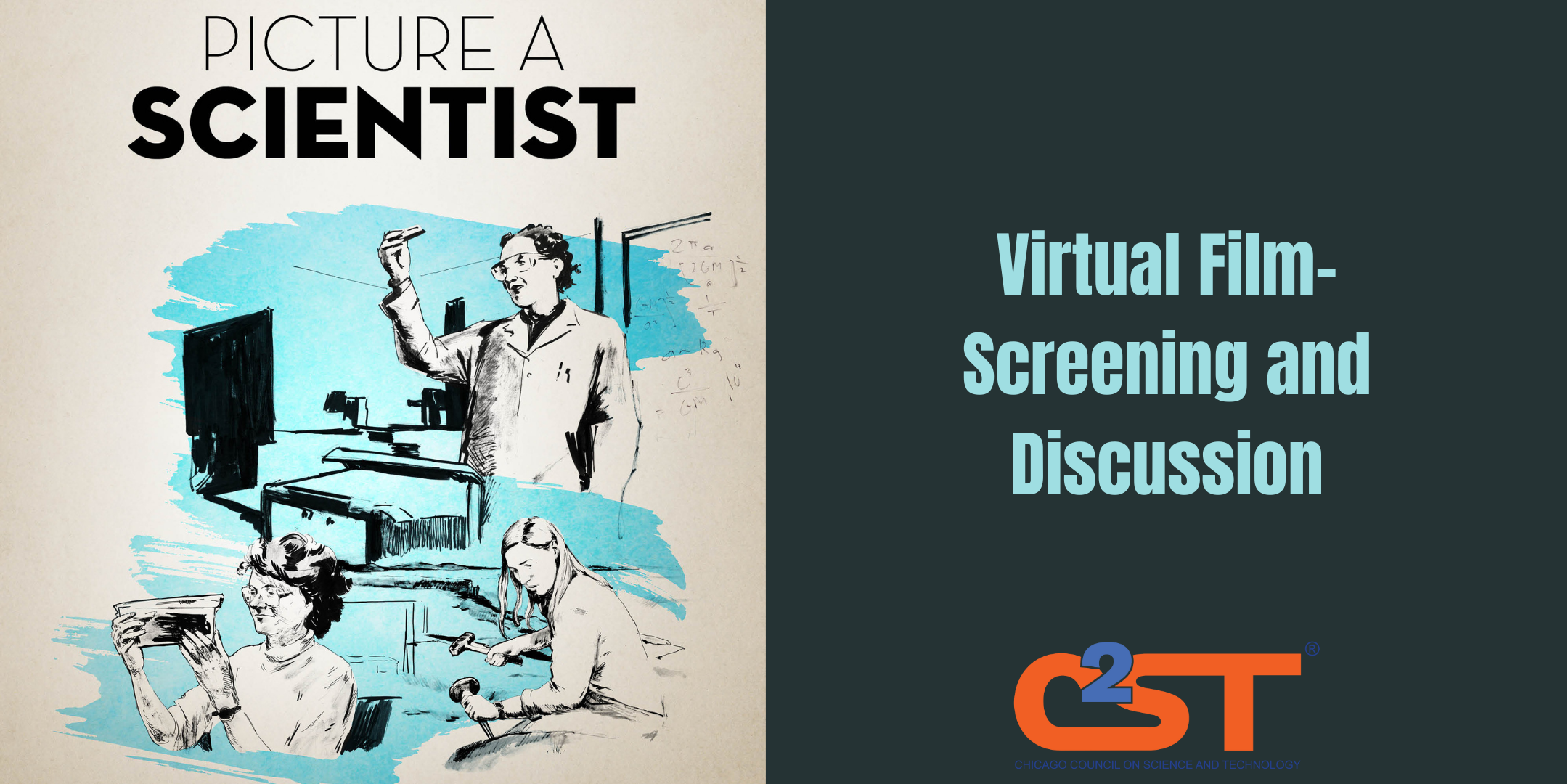“Picture A Scientist” Filmmakers Share Equity Resources

By C2ST Staff
Are you interested in learning more about issues related to equity in STEMM? Whether or not you could join us for the film screening of Picture a Scientist on November 18th, we have a number of equity resources to share courtesy of the filmmakers. Here are a few ways you can take action.
Get Involved
You can volunteer your time and donate to such organizations working toward a more equitable society. Many great organizations focus on equity, justice, and inclusion in STEMM, such as
- 500 Women Scientist
- SACNAS
- 500 Queer Scientists
- Scientista
- Association for Women in Science
- Society for Women Engineers
- The SErCH Foundation
Participate in a Study
You are invited to take part in a brief survey assessing your impressions and reactions to Picture a Scientist. The goal of this survey is to assess your reactions to the film and your plans for the future, and specific actions inspired by the film. This survey results will help filmmakers identify the positive impact of this film and explore how reactions to films may influence beneficial changes in behavior.
Two psychology professors are conducting this research, Dr. Eva Pietri (an Assistant Professor at Indiana University-Purdue University Indianapolis) and Dr. Corinne Moss-Racusin (Associate Professor at Skidmore College), and Arispa Weigold (a student working with Dr. Pietri). If you choose to participate, your answers will be confidential, and only the researchers will have access to your data.
We ask that you please complete the survey at your soonest convenience after watching Picture a Scientist, and we will then have a follow-up survey we would love for you to complete two months from now.
We would very much appreciate your help with this survey! It should only take 10 minutes to complete, and you can access it here.
Request a Training
Transforming a culture of deep-seated bias and harassment requires an overhaul from the ground up—that means disrupting systemic norms and challenging learned behavior at home, in the community, at school, and in the workplace. Myriad programs offer training for bystander intervention, harassment prevention, conflict de-escalation, and workplace resilience. Hollaback, for example, offers training that gives people the confidence to take action when they witness harassment.
Here are other resources:
- UnboundEd. This resource empowers educators and provides various kinds of training, analysis, and support for implementing equitable and anti-racist policies and practices in the school and for families at home.
- Lifting Limits. Implicit gender bias starts early, and this UK-based program promotes early intervention and gender equality in education. They provide guides for families, activities for children, and gender bias training for educators.
- Step UP! Bystander Intervention Program. Developed by the University of Arizona in partnership with the NCAA, Step UP! is a bystander intervention training program that first emphasizes an awareness of harmful prosocial behavior and then provides skills to step up against harassment. This is used in the university setting but applicable to the workplace.
- Video Interventions for Diversity in STEM (VIDS). Developed by social psychologists, working with professional filmmakers, and funded by the Alfred P. Sloan Foundation, VIDS consists of two sets of short videos that expose participants to empirical results from published gender bias research. “Results suggest that this easily-disseminated intervention can ameliorate pernicious STEM gender biases.”
- Project Implicit. Getting to know our own implicit biases is perhaps the first step we can all take towards dismantling discriminatory systems. Take the implicit bias test yourself at Project Implicit.
Be an Ally
- Amplify the voices of women and minority scientists in your organization.
- Work to hire and promote women across your institution/company.
- Work to change processes in your organization to make them less prone to bias and more accountable for sexual harassment and discrimination.
- Fight to make service (mentorship, outreach, commitment to inclusive science) — not just teaching, research, or productivity — play a larger role in tenure and promotion decisions.
- Mentor a young person in science and show them the power of diversity (You can add your credentials to the Request a Woman in STEMM platform).
- Hold a workshop related to implicit bias.
- Host a learning section about how tenure or promotion decisions are made in your institution/ company.
- Take family leave and work within your department/work unit to destigmatize childcare and family leave.
- Work to create new internal mechanisms for reporting and addressing harassment.
- Analyze and address how effective those mechanisms are.
- Lead by example.
- Educate yourself. Our resource guide below has several ways to learn more about the topics explored in the film.
Other recommended Online Resources
National Girls Collaborative Project – A collaborative project that brings together organizations in the U.S. to encourage girls to pursue careers in STEM,
IF/THEN She Can – A national initiative in the U.S. to inspire young girls to pursue careers in STEM by highlighting high profile women in STEM as role models and shifting how women in STEM are portrayed and perceived in the media.
Women in STEM podcasts – A list of 5 podcasts about women in science.
“NIH’s Scientific Approach to Inclusive Excellence” (talk by Hannah Valantine, National Institutes of Health) “An outstanding talk about the issues of gender and race bias in STEM and how the NIH is addressing them.” – Dr. Nancy Hopkins
The Urgency of Intersectionality – TED Talk by Kimberlé Crenshaw, who coined the term intersectionality, explores how based on their identities, one person might faces multiple forms of exclusion.
Why So Slow? (Valian, 1999) – “A superb summary of research by psychologists on the unconscious undervaluation of women and their accomplishments by both men and women.” – Dr. Nancy Hopkins
The Double Bind: The Price of Being a Minority Woman in Science – A groundbreaking report published in 1976 that articulated the additional disadvantages faced by women of racial and ethnic minorities in science.